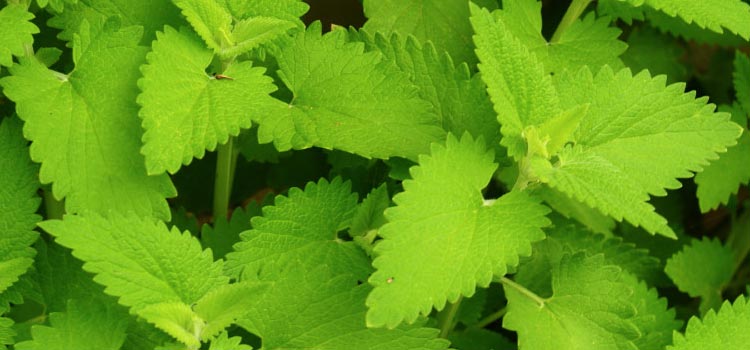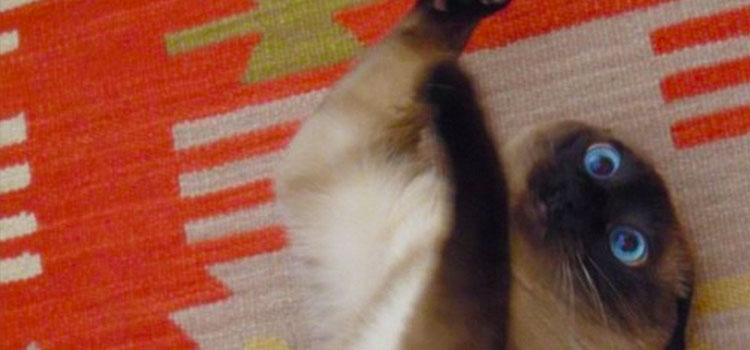Ever wonder what it is about the seemingly harmless herb known as catnip that drives a cat to have a full-on spaz attack? You are not alone. This mysterious kitty dope was originally for human consumption before it started making cats have crazy eyes. Catnip is formally known as Nepeta Cataria.
What is the Catnip Plant (Nepeta cataria)?

The catnip plant, whose scientific name is Nepeta cataria, is a perennial herb of the genus Nepata and mint family Labiatae. Other common names that refer to catnip include cataire, catnep, catmint, chataire, catswort, field balm, and hierba gatera, among others.
What is Catnip’s Origin?
The plant traces its origins to central Europe, Africa and Asia, as a native herb. Today, however, its growth is widespread, through naturalization, to the greater northeastern U.S. and Canada. It can be found growing on nearly all of the seven continents today. A typical catnip grows to a height of approximately 1 meter. Its stalk is square in shape and has a hairy texture. Its leaves are dark green and oval-toothed, with scalloped edges. The plant’s flowers are spiky, and grow to a length of about half an inch. Two of the plants components are primarily medicinal: its dried leaves, and white flowering tops.
What is Catnip For?
Catnip is famous for getting cats high. It is also used by human beings as a sedative, and some claim it induces a high similar to that of marijuana, but it is unproven. Historically, catnip shoots and leaves were used as flavoring agents in soups, stews, and sauces. The components have also been used in some liquors and fruit table wines. Evidence from as early as 1735, published in the General Irish Herbal, supports the usage of catnip flowers and leaves in herbal teas.
What is Catnip’s Medicinal Uses?
Figuring out what catnip is for can be a challenge. Before exploring the medicinal uses of catnip, it’s worth noting that there’s insufficient scientific evidence to support the plant’s claimed medicinal values. However, it has been associated with helping reduce insomnia (trouble sleeping), migraines and other types of headaches.
It is also said to work on colds, anxiety, flus, worm, and hives, fighting upper respiratory infections, gastrointestinal (GI) upsets such as indigestion, cramping and gas, and it’s also associated with helping girls with delayed menstruation, to start their periods. The plant has also been associated with treating diarrhea, applied directly on the skin to treat arthritis, hemorrhoids, and to relieve swelling. People with respiratory conditions also smoke-dried catnip leaves for relief. During the 1960s, catnip was popularly smoked for its euphoric (“high”) effects. Apart from its use in manufacturing, as an insecticide and pesticide, there’s very little clinical data supporting the plant’s use in humans.
What is Catnip’s Effect on Cats?

Nepetalactone is the active ingredient that causes a high in cats. It is an essential oil found in either the leaves or stems of the catnip, or both. The plant contains other active ingredients including acetic acid, citral, geranoil, dipentene, citronellol, butyric acid, tannins, alpha and beta-nepetalactone, and valeric acid.
Nepetalactone has a resultant hallucinogenic effect. Some users compare the effect to that of LSD, while others say it gets them to a high such as that or marijuana. This is not a greenlight for you to go experimenting. None of the claims are verifiable.
On cats, the effects of catnip are almost similar to those of cat pheromone. Some suggest that the plant induces estrus in cats, but since both male and female cats under the influence of catnip behave the same, the claim may be invalid. The most probable explanation is that a cat under influence is exposed to feel-good chemicals similar to the pheromones produced during sexual activity. However, a cat’s reaction to is not limited to sexual behaviors. Playing, hunting and chasing are some common behaviors exhibited by cats exposed to catnip. An interesting point worth noting is that even though most cats seem to be drawn towards eating catnip, which will typically be concealed in toys, and catnip mice, the sniffing is the actual cause of the behavioral changes in the felines. When cats attempt to eat the catnip leaves, they’re actually bruising them hoping to release more nepetalactone. The bruised leaves attract cats more. Cats will, however, still enjoy fresh catnip plants growing from seeds.
When a cat inhales the chemicals in catnip, it portrays behaviors such as sniffing, pawing, licking or chewing at the plant, pawing and rubbing against it, jumping about, purring, rolling over the plant, and in some instances, salivating. Aggression is not uncommon in cats taking catnip. Some will growl, scratch, hiss, meow, or even bite.
Interesting Facts About Catnip
- Catnip does not affect all cats. Approximately 33 percent of all cat species do not respond to catnip at all.
- You can use catnip to draw you cat or kitten to toys they didn’t originally want to play with.
- A cat’s catnip “high” typically lasts 5-15 minutes.
- Cats can’t overdose on catnip.
- Kittens younger than 8 week old do not respond, in any way, to catnip. Some senior cats don’t either.
